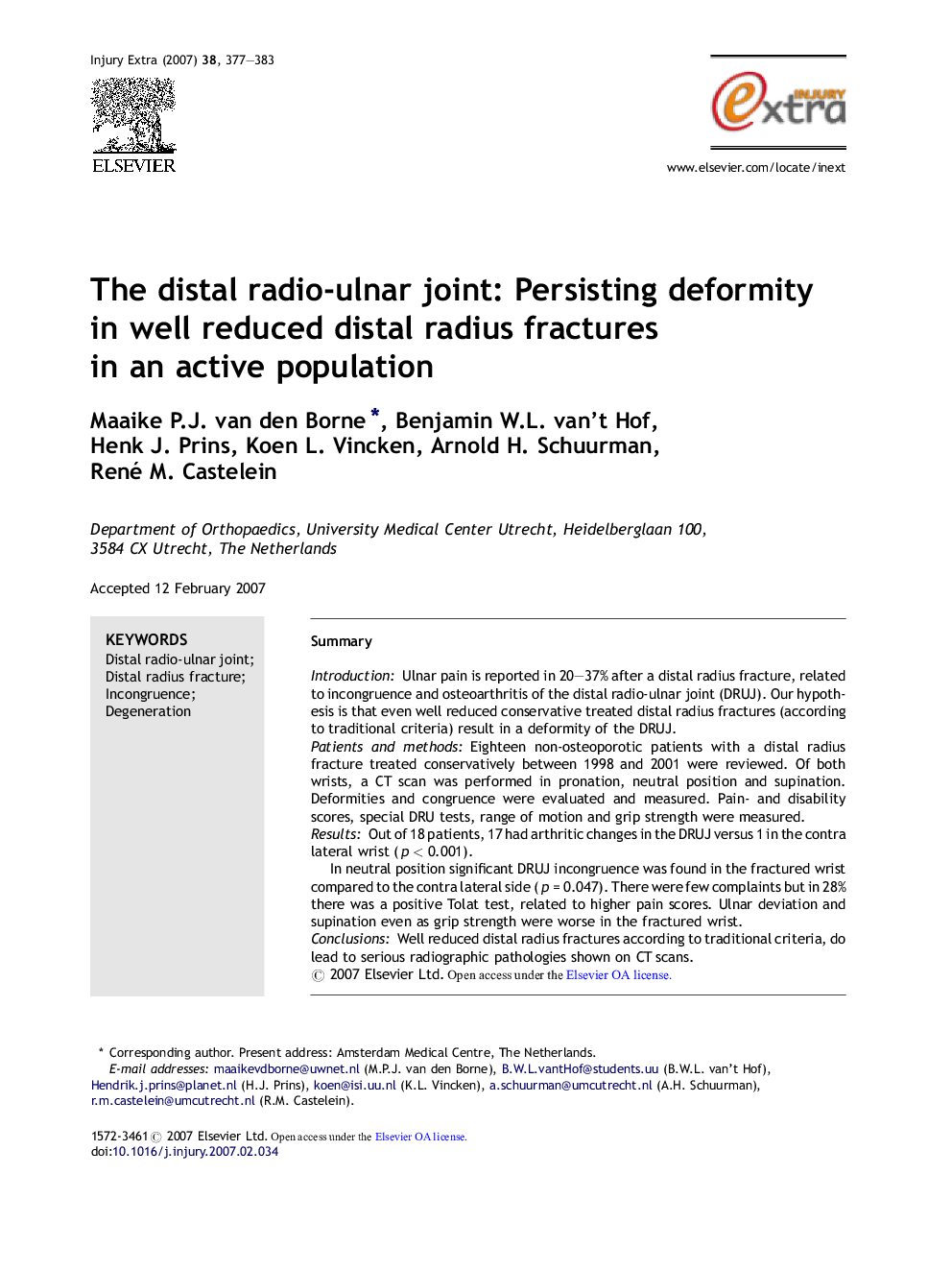| Article ID | Journal | Published Year | Pages | File Type |
|---|---|---|---|---|
| 3244419 | Injury Extra | 2007 | 7 Pages |
SummaryIntroductionUlnar pain is reported in 20–37% after a distal radius fracture, related to incongruence and osteoarthritis of the distal radio-ulnar joint (DRUJ). Our hypothesis is that even well reduced conservative treated distal radius fractures (according to traditional criteria) result in a deformity of the DRUJ.Patients and methodsEighteen non-osteoporotic patients with a distal radius fracture treated conservatively between 1998 and 2001 were reviewed. Of both wrists, a CT scan was performed in pronation, neutral position and supination. Deformities and congruence were evaluated and measured. Pain- and disability scores, special DRU tests, range of motion and grip strength were measured.ResultsOut of 18 patients, 17 had arthritic changes in the DRUJ versus 1 in the contra lateral wrist (p < 0.001).In neutral position significant DRUJ incongruence was found in the fractured wrist compared to the contra lateral side (p = 0.047). There were few complaints but in 28% there was a positive Tolat test, related to higher pain scores. Ulnar deviation and supination even as grip strength were worse in the fractured wrist.ConclusionsWell reduced distal radius fractures according to traditional criteria, do lead to serious radiographic pathologies shown on CT scans.
